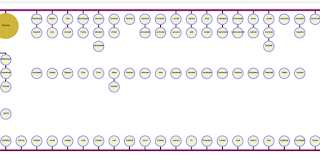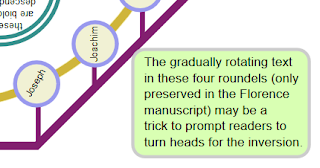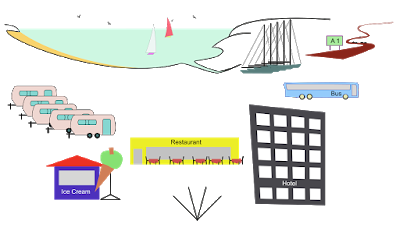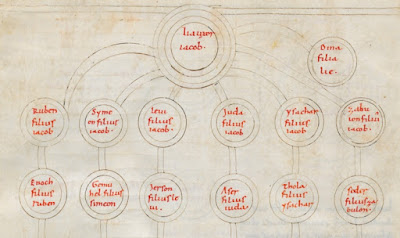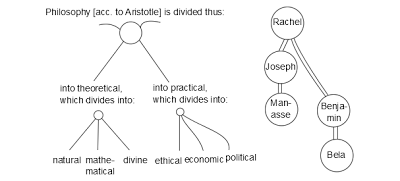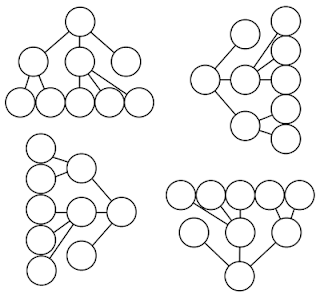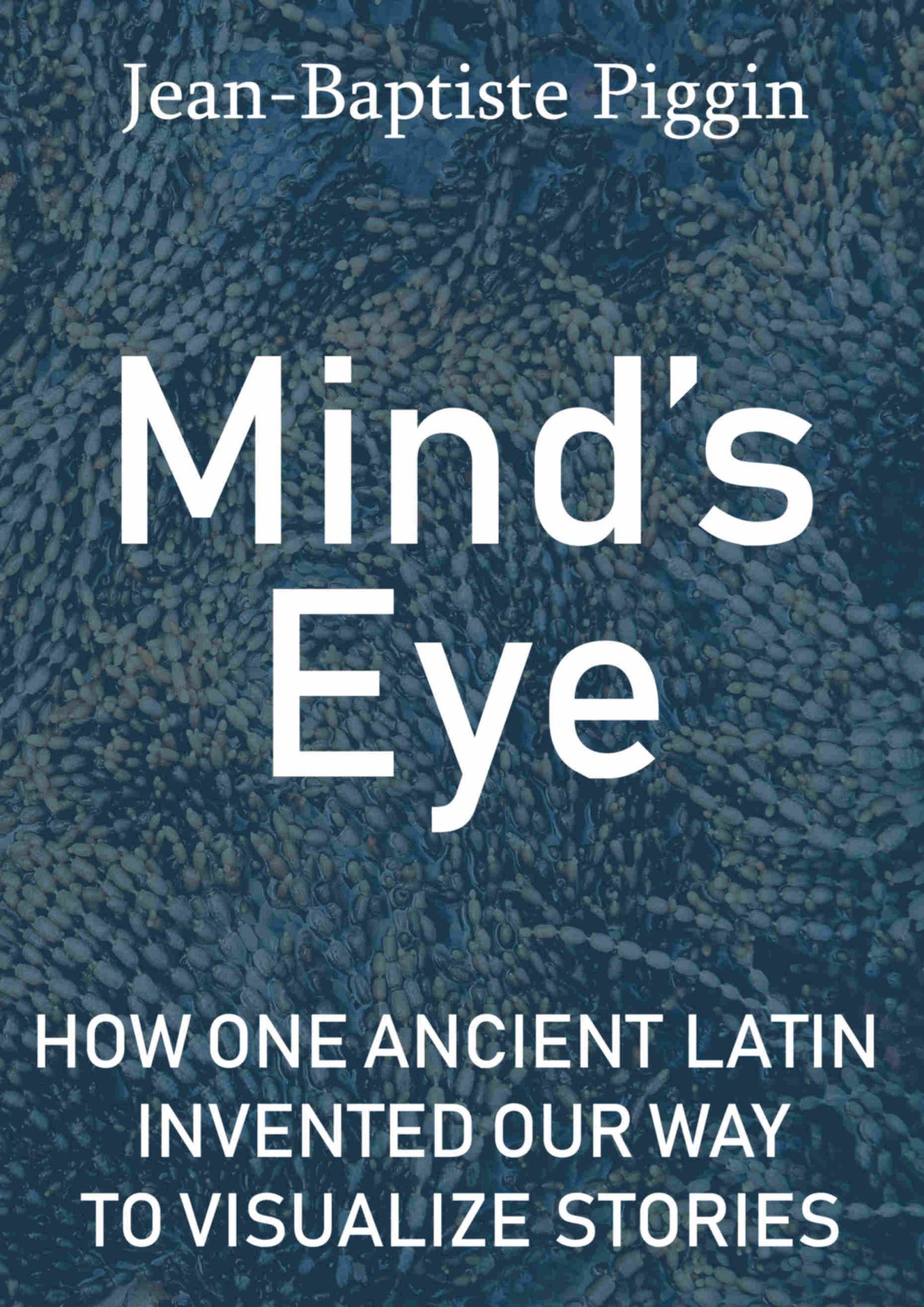Only one direct copy of this lost Codex Laudensis (L) made during those four years exists. As our Easter present, the Vatican Library has just digitized Vat.lat.2901 (V) and placed it online.
Cicero mentions the science of visual perception while introducing the palace-of-memory method of memorizing what to say whenever you are speaking without notes. He starts by quoting the generally correct view of cognitive science of his own day that the keenest of all our senses is the sense of sight (acerrimum autem ex omnibus nostris sensibus esse sensum videndi -- Cicero, De Oratore II, 357.)
He develops from this the method to leverage your visual memory, a method of which he was not the inventor, but becomes a precious witness. It starts with the observation that:
... perceptions received by the ears or by reflection can be most easily retained in the mind if they are also conveyed to our minds by the mediation of the eyes ... (2.357: qua re facillime animo teneri posse ea, quae perciperentur auribus aut cogitatione, si etiam commendatione oculorum animis traderentur).He then describes what we would now call gist memory:
... with the result that things not seen and not lying in the field of visual discernment are earmarked by a sort of outline and image and shape so that we keep hold of (as it were by an act of sight) things that we can scarcely embrace by an act of thought. (Ut res caecas et ab aspectus iudicio remotas conformatio quaedam et imago et figura ita notaret, ut ea, quae cogitando complecti vix possemus, intuendo quasi teneremus).And then segues over to what we would call spatial perception and memory, pointing out its role in combination with the somewhat different visual memory.
But these forms and bodies, like all the things that come under our view require an abode, inasmuch as a material object without a locality is inconceivable. (2.358: His autem formis atque corporibus, sicut omnibus, quae sub aspectum veniunt, [admonetur memoria nostra atque excitatur;] sede opus est, etenim corpus intellegi sine loco non potest.The method of memorizing, which he attributes to the legendary Greek orator Simonides, is to imagine a familiar place and stock it in your imagination with visual marker tags for things you want to remember. The technique is still being taught nowadays. Here's the place, folio 53v, where it is set out:
The above text was also preserved in a lost Carolingian manuscript, known as M, but none of the copies of M existing today is a direct one, which is to say they are copies of copies (of copies).
V is one of 63 manuscripts just released online. Here is the full list:
- Barb.lat.298,
- Ott.lat.3368,
- Reg.lat.846 (Upgraded to HQ), 9th century, from France, possibly theTours region; provenance Paris, St. Sulpice. One of the codices containing (fols. 106v-107r) a fascinating little text on the origin of the name Adam: it says that Adam was created from earth brought by the four archangels from the four corners of the world, sprinkled with water from the four rivers of Paradise, inspired by the four winds, and named after the four stars. Hence the four letters of his name. Charles Wright, creator of wonderful medieval manuscript surveys, has just published an article about this in The Embroidered Bible: Studies in Biblical Apocrypha and Pseudepigrapha in Honour of Michael E. Stone, eds Lorenzo DiTommaso, Matthias Henze, William Adler (ISBN: 9789004355880).
- Reg.lat.2123,
- Urb.lat.1251 (Upgraded to HQ),
- Vat.lat.858.pt.1,
- Vat.lat.858.pt.2,
- Vat.lat.936,
- Vat.lat.1473.pt.1,
- Vat.lat.1473.pt.2,
- Vat.lat.2169, Relative drought of Aristotelian material in @JBPiggin's latest list of MS @DigitaVaticana. Sententia on the Ethics by Henry of Friemar (Henricus de Alemania), an Augustinian hermit from the first part of the 14th c.https://t.co/yuDaHlbWSK pic.twitter.com/U7dN2SbMjY— Pieter Beullens (@LatinAristotle) March 25, 2018
- Vat.lat.2212,
- Vat.lat.2231,
- Vat.lat.2244,
- Vat.lat.2325,
- Vat.lat.2330,
- Vat.lat.2413,
- Vat.lat.2517,
- Vat.lat.2666 (Upgraded to HQ),
- Vat.lat.2683,
- Vat.lat.2688,
- Vat.lat.2738,
- Vat.lat.2739,
- Vat.lat.2747,
- Vat.lat.2749,
- Vat.lat.2769,
- Vat.lat.2775,
- Vat.lat.2782 (Upgraded to HQ),
- Vat.lat.2788,
- Vat.lat.2798,
- Vat.lat.2799,
- Vat.lat.2801,
- Vat.lat.2802,
- Vat.lat.2807,
- Vat.lat.2811,
- Vat.lat.2812,
- Vat.lat.2813,
- Vat.lat.2814,
- Vat.lat.2817,
- Vat.lat.2819,
- Vat.lat.2820,
- Vat.lat.2824,
- Vat.lat.2825, Not simply is this one of the earliest copies of the pseudo-#MacerFloridus, but it has a bonus: a list of medical texts. "Hi sunt libri medicinȩ. Panthechin. M[a]gategn. Liber febrium. Liber aureus. Passionarius. Antidotarius. Liber oculorum. Liber coitus. Liber urinarum. ... pic.twitter.com/tLRj2V2P8Z— Constantinus Africanus (@EgoConstantinus) March 25, 2018
- Vat.lat.2826,
- Vat.lat.2827,
- Vat.lat.2829 (Upgraded to HQ),
- Vat.lat.2831,
- Vat.lat.2843 (Upgraded to HQ),
- Vat.lat.2845, With incipit: Plato tria arbitratur esse rerum initia; author: Laurentius Miniatensis Bonincontri. See eTK
- Vat.lat.2850 (Upgraded to HQ),
- Vat.lat.2852,
- Vat.lat.2862 (Upgraded to HQ),
- Vat.lat.2865,
- Vat.lat.2874 (Upgraded to HQ),
- Vat.lat.2875,
- Vat.lat.2881,
- Vat.lat.2885,
- Vat.lat.2892,
- Vat.lat.2897,
- Vat.lat.2901, key source of Cicero, De Oratore, manuscript V(above)
- Vat.lat.2903 (Upgraded to HQ),
- Vat.lat.2905 (Upgraded to HQ),
- Vat.lat.2937,
- Vat.lat.2943,
- Vat.lat.2948,
- Vat.lat.2949 (Upgraded to HQ),
- Vat.lat.3024 (Upgraded to HQ),
- Vat.lat.3077,


